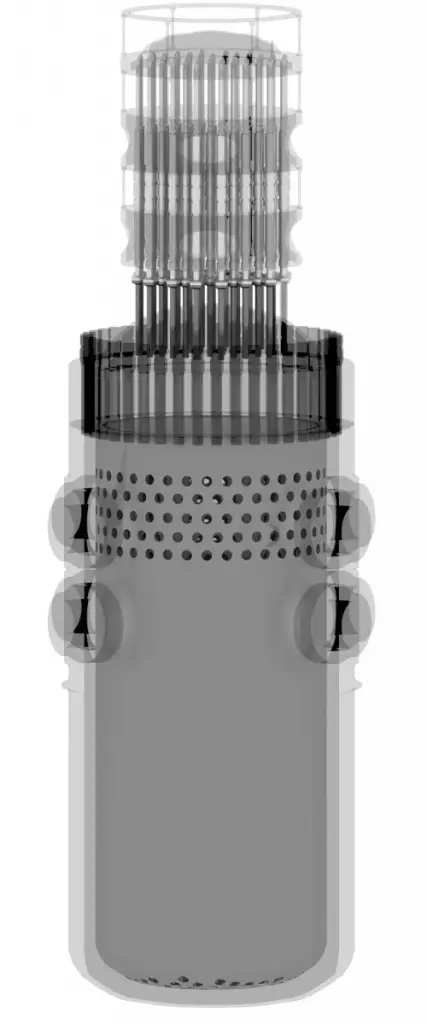The core barrel belongs to the lower core support structure because it houses a reactor core. Other lower core support structures (lower core plate, core baffle, or heavy reflector) are attached to the core barrel, which transmits the weight of the core to the reactor vessel. The barrel is a long, cylindrical, one-piece welded structure. Like most components of the internals, the core barrel is made of low carbon, chromium-nickel stainless steel because it is situated in a corrosive environment (primary coolant comprises boric acid), and the material should not get oxidized.

The core barrel rests on a ledge machined into the pressure vessel flange and is centered at its upper flange with alignment pins. The lower core plate is welded to the bottom of the core barrel. The lower core plate consists of N holes for fixing fuel assemblies (N is a number of fuel assemblies in a specific reactor – e.g.,, 157).
The lower internals and the core barrel remain in place during refueling but may be removed for reactor pressure vessel in-service inspections.
The flow path for the reactor coolant through the reactor vessel would be:
- The coolant enters the reactor vessel at the inlet nozzle and hits against the core barrel.
- The core barrel forces the water to flow downward in the space between the reactor vessel wall and the core barrel, and this space is usually known as the downcomer.
- The flow is reversed up through the core from the bottom of the pressure vessel to pass through the fuel assemblies, where the coolant temperature increases as it passes through the fuel rods.
- Finally, the hotter reactor coolant enters the upper internals region, where it is routed out the outlet nozzle into the hot legs of the primary circuit and goes on to the steam generators.